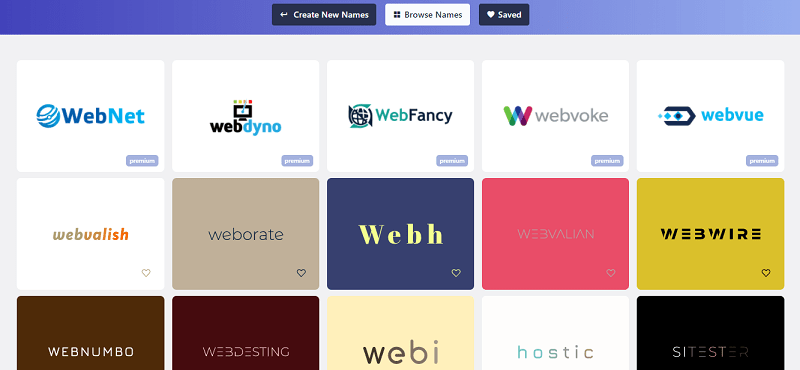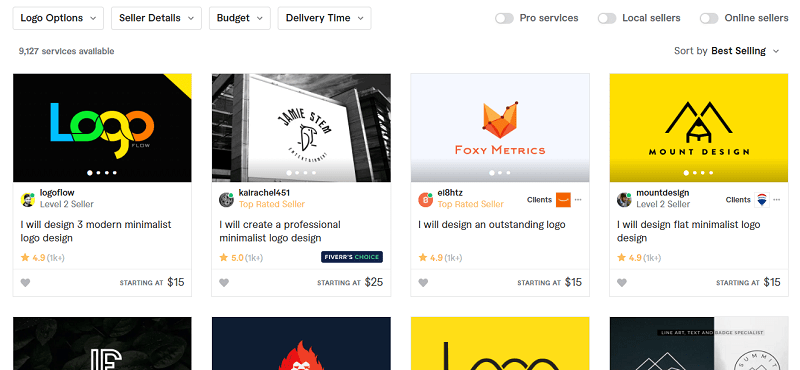How to start a web hosting business
Welcome to this free step by step guide for how to start a web hosting business.
With white label reselling, it’s incredibly easy to get started and I show you how!

Becoming A Reseller
Learn where to get absolutely free white label web hosting to resell to clients.

Handling Customer Support
See how to approach customer support to minimize your workload and focus on sales.

Customer Acquisition
I tell you how I got my first customers and the best ways to get your first web hosting clients, too.

Plus Insights & Tips
And I show helpful information to lower workload & efficiently grow your business.
A brief intro to my hosting experience.
Before I wrote this guide, I lived this guide. I launched 515Hosting.com from the comfort of my couch and I’ve accumulated web hosting clients with a business model that’s easy and extremely affordable.
As you scroll through this guide, I’ll walk you through a nearly step by step process I took to partner with a free white label web hosting provider to bringing on my first client. Leveraging the power of reselling and strong retention, web hosting is a powerful passive income stream you can run as a side gig.


Why Become A Web Hosting Reseller

Passive Income
Once you lock in a web hosting customer, you’ll be generating passive income each month they remain a customer. In the industry, the hassle of switching providers often means you have a long term customer.

Low Risk
As a reseller, using free reseller hosting, you don’t have huge start up costs. You can have a website up and running to sell your web hosting services for under $50 for a domain and web hosting through 515hosting or your own plans.

Relatively Hassle Free
It’s not going to be easy per se, but because you’re just selling the services, you work on your schedule and let the hosting company handle the after sell support. You can sit back and relax while other web designers are constantly answering support calls.
Let’s Get Started
So the first thing you’re going to want to do is…hold on a minute and take a redirection.
You probably think the first thing you’re going to want to do is get a reseller web hosting account and a domain name for your website.
And that’s absolutely a critical part of this operation, except, it’s probably not the best first step. Listen, I want your affiliate click and all, so I’m gonna go ahead and toss in a call to action here on where you can get free white label reseller hosting – go ahead and lock in that tracking cookie if you want, but I’d really encourage you to take a quick detour.
Step 1
I started 515Hosting on accident. Ultimately, it turned into something I built and grew with intention, but at first it was really just this realization that locally there was an underserved market.
I had been building WordPress websites and familiarizing myself with the intricacies of web hosting and SEO since around 2008. Over the years, I had read a lot of guides, not much unlike this one, just absorbing information until finally I had this foundation of knowledge I leveraged into some sites that propelled their growth.
From a management perspective, I felt like I had pretty much tapped those sites out. I was ranking number one and they were just sort of coasting along. I was itching to start another project and I just needed someone to keep an eye on things. So I started searching for local web designers and agencies, but I didn’t really find anybody that stood out locally in rural Iowa. Meanwhile, I was starting to network with small business owners and starting to uncover some of the struggles many of them were facing (even if they didn’t know they were facing it) – like overpaying for web hosting or failing to rank where they could be in search results.
Suddenly, this swiss army knife of web administration person I was trying to find to make way for my next project became my next project. I decided if I couldn’t find someone to fill this role for me and other businesses couldn’t find someone to fill this role, I’d fill it myself.
Building a brand around and business name around that niche.
(Psst…you might want to combine this part with step 2. I’d hate for you to get too invested in a business name you can’t even use!)
515Hosting is based and focused primarily in central Iowa. Interesting enough, most of my clients are actually out of state (and we’ll get to that in a bit), but from an SEO perspective my target audience is Iowa businesses.
That target niche is the key and it’s why this is step one.
Companies like GoDaddy, Bluehost, and these other large corporations are “household” name in the website world. They have huge marketing budgets and competing against them as strictly web host versus web host is incredibly difficult. The abysmal service and costs associated with GoDaddy provide some opportunities to entice customers with something more affordable, but other than that it’s admittedly a crowded space.
Succeeding requires getting away from the crowd. You’re probably not going to succeed paying for advertising directly against these companies. Their pockets are too deep and capable of outbidding you.
But, you can separate yourself from them and build a brand that includes web hosting in doing so by figuring out a way to set yourself apart.
A lot of times, this is frequently achieved by marketing agencies or web designers who place these services under an umbrella of other value added services. Web designers typically make monthly web hosting a part of their contract and marketing agencies will sometimes build landing pages as part of marketing campaigns and bury the cost of monthly web hosting into this.
You don’t necessarily have to start building websites, but you can benefit greatly from drilling down into a niche.
For example, I would even consider joining a local Chamber of Commerce as a highly targetted niche you can leverage that doesn’t require offering any other services than web hosting. Now, you’re not competing for those businesses as customers against other major web hosts as yet another faceless entity, but you’re competing for them as a person they shake hands with.
We’ll talk a bit more about this later, but essentially it’s important to start considering these things now so that as you make decisions moving forward you incorporate these aspects as necessary.
Case in point.
515Hosting is based in Iowa and I wanted to really target the Des Moines metro area with a 515 area code. As you might have guessed, that played a strong role in the business name and the skyline of Des Moines became an inspiration for the logo.
If you’re struggling to find that same inspiration for a business name, don’t fret!
There’s a couple tools I find highly valuable for getting those gears turning (or perhaps just doing all the work for you). Namelix and Looka are websites that offer artificial intelligence based branding and logo creation. Namelix allows you to input a couple words as seeds for business and domain name ideas. While Namelix does offer some logo options once you’ve found a name you like, you can also take that name over to Looka and build a custom logo from there.
But don’t get too far ahead of yourself, because you still need a domain name that hasn’t been taken already!
Don’t forget! Make sure you lookup your business name to ensure you’re not infringing on copyrights, trademarks, or other business entities. Aside from the legalities, if you want to register your business (which I did through LegalZoom to form an LLC), it’s necessary.
Needing some brand inspiration?
Here’s some services I like to use.
Believe it or not, but the very logo of this site was created using Looka. You don’t have to be a branding guru, you just have to know where to look to get some help and these are some great options for getting you fast tracked to an awesome brand name!
Step 2
So now you’ve got this cool business name that represents your brand personality, your niche, and your service.
Let’s take that and turn into a domain name.
There’s some things to keep in mind, though. Yes, this is an online business and the objective is for people to find you through search, in which case the name of the domain has much less importance than the content of the site. However, while you might not be a brick and mortar location, you are going to have an interest in having a memorable domain name for people you want to send there that don’t find you through search and for people who need to remember the domain as a returning customer.
That’s why choosing a relatively simple domain that’s easy to remember, type in, and ties in with your business in some way is important.
I also recommend sticking with some of the more common top level domains. There are some unique ones these days, like .host, that might be of interest, but for similar reasons to having a memorable domain name it’s a good idea to keep the extension easy also. A .co extension for example has picked up some popularity, but being that .com is so much more common, I’d be concerned that people could end up trying to find you directly and end up at entirely the wrong domain, which could be a competitor.
While we’re not quite ready to build the website yet, it’s often a good idea to go ahead and grab the web hosting at the same time as the domain name. The Free White Label Reseller I use offers a free domain name with some of the packages; however, the do need to be registered at the same time as the plan is purchased.
You can play around with what that might look like for your customers by going through the process yourself as a customer using the domain name form below.
Step 3
We’re going to build the website very soon, but first we’re going to cover a few steps before we do that. For now, we just want to get the web hosting account ready in preparation of putting a site on it and at the same time hit some prerequisites I like to achieve before moving on to the following steps.
One of the first things you want to do is create a webmaster email address. I set mine up to be [email protected], but “admin” also works. I’ve realized a lot of people overlook this sometimes, but it’s really important in the event there is a server error. In the event there is, the server attempts to fire off emails to specific “administrator” email addresses, one of which is by default “[email protected]“.
While you’re working with the emails, I’d go ahead and add email addresses for support, billing, and sales as well. Starting out, you can simply set up forwards for these to a main, monitored inbox.
Next, given DNS propagation has had enough time to resolve the A records correctly, you’ll want to install the SSL certificate. Take a few moments to familiarize yourself with the control panel.
If you don’t understand certain concepts like SSL certificates, adding email addresses or uploading a website, it’s a good idea to learn those things. Your best ability to sell the service starts at a fundamental understanding of the service. You can check out this landing page I built for 515hosting that covers a lot of the stuff that you’ll want to also know about.
For example, I like to use Hubspot as a Customer Relationship Management system and setting up multiple emails provides me a way to forward certain email addresses to certain ticket pipelines. We’ll discuss CRMs in a later step, but for now here’s what I do.
Setting up your emails.
How I handle email inboxes for 515Hosting.
How you structure your emails is entirely up to you, but for 515Hosting I’ve set up multiple email addresses with specific purposes. Many of these email addresses ultimately forward to another address, but setting these accounts up now helps with organization and scaling.
Psst! While the Business Account has some additional features, we’re only concerned with call forwarding available free on the personal plan..
Step 4
Aside from creating a layer of separation from our personal contact information, there’s some really great reasons to use a separate phone number for your business. For example, for 515Hosting, my cell phone number isn’t associated with the 515 area code and by choosing to elect an area code for my phone number that matches the area code of my customer base, I end up with greater localization and client trust of a service area.
There’s quite a few options available for call forwarding type services and once you reach a certain rate of growth you might even consider looking into getting a toll free (1-800-esque) number.
I ended up choosing Google Voice and just associating a Google account with one my primary business email addresses. That Google account allowed me access to some other tools, too – like analytics and Google Search Console, which I used later.
For now, I just needed something to allow me to forward phone calls from a 515 number to my cell phone number, receive text messages to that number, and handle voicemails. Since Google Voice is a VoIP service, it has the ability for you to use it completely through your computer, including sending and receiving calls from a laptop if it has a microphone.
Another couple cool features is that Google Voice can automatically transcribe voicemails and even forward messages to an email inbox.
Let’s Get You Some Digits
Create Your Google Voice Number
In order to have to a Google Voice number, we need a Google account. If you already created an email address using the domain you purchased before this step, you can create your Google account with that. I think that makes the most sense as it consolidates your online identities a bit instead of having them spread over multiple addresses. It’s also worth pointing out, creating a Google account now alongside this Voice number gets the ball rolling for other Google services like Google Search Console or Google Ads we’ll use later.
Psst! While the Business Account has some additional features, we’re only concerned with call forwarding available free on the personal plan..
Step 5
When I started building 515hosting, I was kind of doing these steps on the fly and so I had a reseller account first and then I had a website before I had a dedicated business number. I ended up having to change a bunch of stuff after the fact, so that’s why as I wrote this guide I rearranged a few steps.
As we discussed earlier, in order to sell web hosting, we need server space for our clients to host their websites on. Traditionally, what would happen is an individual would purchase a server plan and then sell off portions of that plan to customers. The idea of course, much like any reseller hosting, is that you profit from the spread between what you charge customers per plan and the expense you have as a reseller for the server.
One of the things I’ve realized a lot of web designers will do is simply purchase a web hosting plan for themselves (the same plan they host their own site on) and simply add their client sites to the same plan. Assuming they have an “unlimited bandwidth, storage, and domains” hosting, these is lucrative because they might only pay $15 a month for hosting their own site and everything above that is pure profit…except it’s extremely problematic.
As I wrote in my “should you pay your web designer for web hosting” article, I explain why this is such a huge problem.
Let’s say your web designer ends up in the hospital and you need to make changes to your business website. If it’s locked behind his/her account, you can’t access your site and perhaps maybe not even your domain. In fact, you may be completed locked out of ownership entirely depending upon how it’s structured and your entire business at the mercy of getting access to your web designers hosting account. Not to mention, “unlimited” plans are rarely actually unlimited, so having all these websites pooled together ends up causing some serious stress on the actual limited CPU resources which can affect every website on the shared hosting plan.
That’s why it’s important to work with a reseller structure that gives every client their own plan they control and their own resources tied to their account. By using a free white label reseller web hosting service like Reseller Panel, that’s exactly what we can offer our clients and best of all, there’s no up front costs!
Choosing a Reseller Host
Cost – Obviously this is going to be a huge aspect of your business because it affects profitability. Beyond that, though is also the start up cost and some of these reseller plans can be expensive.
White Label – If you’re going to market yourself as a web host, it’s important you find a company that allows you to brand yourself throughout the customer experience. If a client logs into their dashboard and sees the actual name of the web hosting company you’re using and not yours, this not only throws up some flags but leads the customer to wonder if they’d be better off buying direct.
Customer Support – I highly recommend you test the customer support of the company you partner with because their support is going to be representative of your support!
Delegated Access – You also want to be sure when you setup your client accounts that you have some sort of delegated access. It’s also a good idea to compare what type of access you have as some resellers may restrict just how much access you have to manage your clients.
Variety of Plans – The reseller you choose should have the types of plans that match your needs. You may not need every solution, but having a variety of plans available is helpful if you want to grow with your customers who outgrow shared hosting and need a VPS or dedicated server.
Some recommendations.
Reseller Hosting Options
There’s no shortage of web hosting companies out there offering their services and most of them offer some sort of reseller program. When I first started in web design I was using Hostgator and in order to offer reseller hosting, I had to first purchase a reseller hosting plan. Thankfully, I had the foresight when I started 515hosting to search up free reseller hosting, which entirely changed my trajectory of success. By using free reseller hosting, I only paid for hosting on an as needed basis allowing me to focus my profits on reinvesting into marketing and projects for growth instead of eating monthly expenses related to reseller plans until I was able to sell them.

I use Reseller Panel for my web hosting operation for a number of reasons. I’ve had great experiences with their customer support, their proprietary Hepsia control panel is both unique and cost effective to their bottom line (and my bottom line) and they seem to have the most intuitive and modern interface on the reseller dashboard area.

Before I started using Reseller Panel, I played around with Reseller Cluster. One of the unique features they offer is a “free hosting” tier, so you can offer customers a free hosting option as a lead into higher priced products.
Step 6
As you set up your hosting plans, you want to be keenly aware of the competition. As I mentioned earlier, the space is pretty crowded and while it might seem like you can just have a race to the bottom with pricing, the reality is there are web hosting companies out there offering free web hosting. You typically can’t compete strictly on pricing alone.
What I recommend is taking a look at what other companies are doing and then use that in a way that you can leverage.
For example, with GoDaddy, many of their low end packages don’t even offer SSL certificates. Companies like HostGator do offer SSL certificates, but they don’t have a local representative that can sit down at a computer with a customer directly across from them and if you opt to focus on a local area that’s something you can do.
These are also things small businesses will take into consideration as they look to purchase web hosting.
Generally, you want to try and mesh affordable pricing with an emphasis on value and then seek out the right customers that aren’t merely looking for the cheapest web hosting product. Coming in too cheap can also make customers leery of the product even if you’re in a place of pricing power that you can effectively do so because so much of the bottom barrel web hosting offered in the industry is representative of “you get what you pay for”.
Instead, what you should aim to do is provide packages that bundle features that bring clients value beyond just web hosting.
Get Creative With Bundles
Building Add On Services
Because you can bill customers directly, you can set your pricing on your website to cover services beyond just web hosting. When customers sign up with you, you’ll create the account on their behalf and bill them directly. This allows you to bury the web hosting cost of services in the invoice when you might be offering other services like web design. Alternatively, you can also have customers buy directly through Reseller Panel; however, they’ll only be able to bill for the web hosting itself.
See how I approached this at 515Hosting by combining web hosting with website management, SEO, and web design.
Step 7
As you set up your hosting plans, you want to be keenly aware of the competition. As I mentioned earlier, the space is pretty crowded and while it might seem like you can just have a race to the bottom with pricing, the reality is there are web hosting companies out there offering free web hosting. You typically can’t compete strictly on pricing alone.
What I recommend is taking a look at what other companies are doing and then use that in a way that you can leverage.
For example, with GoDaddy, many of their low end packages don’t even offer SSL certificates. Companies like HostGator do offer SSL certificates, but they don’t have a local representative that can sit down at a computer with a customer directly across from them and if you opt to focus on a local area that’s something you can do.
These are also things small businesses will take into consideration as they look to purchase web hosting.
Generally, you want to try and mesh affordable pricing with an emphasis on value and then seek out the right customers that aren’t merely looking for the cheapest web hosting product. Coming in too cheap can also make customers leery of the product even if you’re in a place of pricing power that you can effectively do so because so much of the bottom barrel web hosting offered in the industry is representative of “you get what you pay for”.
Instead, what you should aim to do is provide packages that bundle features that bring clients value beyond just web hosting.
Get Creative With Bundles
Add Value to Customers By Building Add On Services
Because you can bill customers directly, you can set your pricing on your website to cover services beyond just web hosting. When customers sign up with you, you’ll create the account on their behalf and bill them directly. This allows you to bury the web hosting cost of services in the invoice when you might be offering other services like web design. Alternatively, you can also have customers buy directly through Reseller Panel; however, they’ll only be able to bill for the web hosting itself.
See how I approached this at 515Hosting by combining web hosting with website management, SEO, and web design.
Step 8
Alright, now comes the fun part (aside from collecting income).
I registered 515hosting.com on a Friday and I was ready to build a website for my business that same day. Before I started 515Hosting, I had already built multiple personal websites using WordPress, so it made sense for me to just continue on that path. As I had already built quite a few websites, I was already in a good position to expedite building mine. I ended up spending the entire weekend hunched over a laptop and by Sunday night I pretty much had a website ready to go, though it evolved quite a bit over time as I added new content and tweaked things.
One of the unique features of Reseller Panel is that their free white label reseller web hosting service offers some template websites. While using those can fast track you a bit, it’s really not the best method because they highly limit what you can achieve with your website in terms of design and content.
I’m not going to dive in a deep tutorial of how to build a website, because there are plenty of those already and that’s outside the scope of this guide, but I will cover some things to consider.

For 515Hosting, I created a landing page free of distractions that combines geotargeting with promotional offers.
Let’s Design
Your web site should represent you and your target audience. It’s your primary lead generation tool!
You should make sure to have clear call to actions, ways to contact you, and be clear, but concise with the information you provide.
I found sometimes providing too much information was problematic as it overwhelmed visitors of the site. Small businesses that need web hosting often aren’t concerned with the intricate details, they just want to know they’re getting a service that’s going to work for them at a price they like.
While it might seem counter intuitive, going overboard with telling them what you offer in detail and how it will work for them is less successful than just telling them what you offer and that it will work for them.
Non Design Related Things to Keep in Mind
What’s Under the Hood Matters, Too.
One of the things that can happen in building your site is that you’ll end up with a beautiful website with lots of potential, but that fails to deliver in the best ways possible because of oversights. Make sure you install a caching plugin to speed up your site, minify the code, and look into content delivery networks like Cloudflare or Bunny.net to offload files to remote servers and speed up your website. It’s also important to look into improving email deliverability. WordPress’s email system by default can sometimes cause emails to go to spam or not be delivered at all. Given your reseller web hosting site is going to be so reliant on emails as customer connections, it’s vital those don’t go missing! I like to use Elastic Email plugin with WordPress to ensure I never miss a customer inquiry.
Lastly, don’t forget to backup your site! One of the cool things about Bunny.net is that in addition to being a CDN, they also offer remote storage via FTP. So I integrate my site with them so I can also upload backups automatically using Updraft Plus.

ElasticEmail – Email Sending Service
This service allows you to use a default mail server to send emails that has greater results than even SMTP through a shared server. Plus, you can send up to 100 emails per day for free from a WordPress contact form!

Bunny.net – Content Delivery Network & Remote Storage
While I still use Cloudflare for name servers and some CDN usage, I offload the vast majority of my traffic resource needs to Bunny.net. They’re affordable and offer remote storage which I use for backups.
Step 9
It might seem like an insurmountable challenge to compete in search results against much larger web hosting corporations, but with an effective SEO strategy it can be done.
One of the first things you want to do is get your business listed with Google My Business. This is going to be a huge marketing potential that other larger web hosts can’t match. You’re going to have a local existence and so once someone locally types in web hosting services in a certain area, it’s going to give priority to your reseller web hosting business.
I also recommend looking into additional directories that you can submit your web hosting business to.
Next, I recommend referring to an SEO checklist to nail down your website’s search engine optimization plan.
Let’s talk about SEO
There’s a lot involved getting a site ranked.
You’re probably not going to rank for “web hosting” in general, but you can definitely rank for niche web hosting search terms. For example, 515Hosting is right on the first page of Google for “Iowa web hosting” and there searches every month for that. How you approach SEO is going to differ slightly from niche to niche, but in general there’s a few solid concepts I apply to every website I apply my SEO expertise to associate yourself with and apply to your website.
On Page SEO
On page SEO encompasses the written content of the page, including titles and meta descriptions. I’d go so far as to include ALT text for images as well. The idea of course, without stuffing keywords, is to create content relevant to your niche of web hosting.
Off Page SEO
This includes things like directory submissions and I’d also include social media presence as well. It tends to be the most labor intensive because you have to pursue backlinks typically by doing outreaches or guest blogging.
Technical SEO
Probably the area most under recognized, technical SEO is all about things like speed optimization, structured data, and even site security. This is the type of stuff that requires knowledge of .htaccess perhaps or other more technical skills.
Step 10
Now we now to prepare to collect money!
Depending on the reseller you choose, the way billing is handled will vary. Reseller Panel for instance allows customers to buy hosting directly and they’ll accept the payment on your behalf, banking it until you have enough saved up to request a withdraw.
Many of the cPanel resellers also include integrated billing software in the form of WHMCS.
These only works if your customers buy directly through them.
If you opt to bill your customers directly, you’ll need to have an invoicing solution.
I use Wave Apps. It’s a free cloud accounting platform and then when I onboard a customer, I simply set up automated invoicing to send customers an invoice monthly or yearly.
One of things you have to remember as you start earning that dough is to hold a little bit for uncle Sam. My rule of thumb is 30/30/30/10. You save 30% for taxes, 30% reinvested back into the business, 30% for personal income, and 10% saved for a rainy day.
Step 11
This likely the most difficult part of this entire scheme, but I guarantee it’s possible to get customers – I did!
To get web hosting customers, you neeed a combination of proactivity, social media presence, SEO, and of course locking down your niche. One of things you have to keep in mind as you build a business is that it’s not going to happen over the course of a weekend. Sure, you might be ready to go on Monday morning, but you’re probably not going to secure that first customer by Tuesday. It can be easy to write these things off as failures, but often people are just one situation away from a first client and given these free reseller options that were discussed earlier, you’re not bleeding money in the meantime.
Using my business, I’ll walk you through exactly how I got my first clients.
So, at this point I have a website and a phone number and I’m thinking “what now?“
I have some limited connections from business networking, but I’m not quite ready to work with locals as I don’t want to burn a bridge of reputation while I garner some experience. My fear was that I’d take on a project, fail, get a bad review and then I’d be done for.
Since I was tying my reseller web hosting business in with web design, I decided I needed to first seed my portfolio. This was partially achieved by uploading some of my prior work for personal sites, but then I also joined UpWork as a freelancer to see if I could lock in some initial sales. To be quite honest, at that point I was working for next to nothing, but I was really less concerned about the income and more concerned about getting some good reviews and testing things out.
Turns around, my reviews went well and these little projects turned into greater opportunities. A lot of people were searching UpWork for help with DNS related issues or migrating sites, and these were things I could solve regardless of the web hosting that was used. So I’d fix their problem on GoDaddy and that was my “in”. All of a sudden I had a direct contact with someone that needed my type of service and I had fixed the issues they had with their existing service.
For example, I had a client that needed their SPF records changed so they could send mail from Gmail accounts with an alternative reply-to without throwing warnings. Bluehost had failed to input the right records because they didn’t take the time to understand the problem fully and now I was given an opportunity for UpWork customers to see the value of a one on one interaction with a dedicated webmaster…err…server admin – something like that.
All of a sudden, from UpWork alone I had a handful of clients across the US paying me each month for web hosting. That’s how, despite targeting web hosting for Iowa, I had more clients across the US than in my own state.
Each time I onboarded a client, I would encourage them to tell their friends and fellow business owners by sending them an email and within that email I would encourage them to send a review to help me improve and grow my business. If you don’t ask the answer is no and often people were happy to respond positively.
At this point, I was then comfortable reaching out to local customers.
I actually started by open the Yellow Pages and just started cold calling local businesses. I also fond value in connecting with members of the Camber of Commerce. Often, these businesses are delighted to work with a fellow local business and you don’t run into some of the bottom of the barrel price scrapers that way.
And suddenly, business was slowly starting to grow!
However, I noticed that even though my business was growing it appeared dead to outsiders. I figured that would be a negative connotation and wanted to improve the liveliness of my business. It can be hard to imagine social media being helpful to web hosting companies, but for me it was less about connecting with people through hash tags to find customers and more about just ensuring people knew I was active and the business wasn’t some fly by night operation doomed to fail. Social media was an important role in that.
What I did find value in with connecting with customers via social media was to start releasing blog content. Providing web designers and web related businesses information they’d’ find useful brought me leads. For example, let’s say I released a video on “how to alter the CSS of Contact Form 7”. That is highly relevant to people building websites and people building websites need web hosting.
From that point, it was just rinse and repeat until I had scaled to where I just couldn’t take on any additional clients! That’s where you come in! Now, you take what you’ve learned and you grow your own web hosting business and in the process we’ll both be rewarded!




